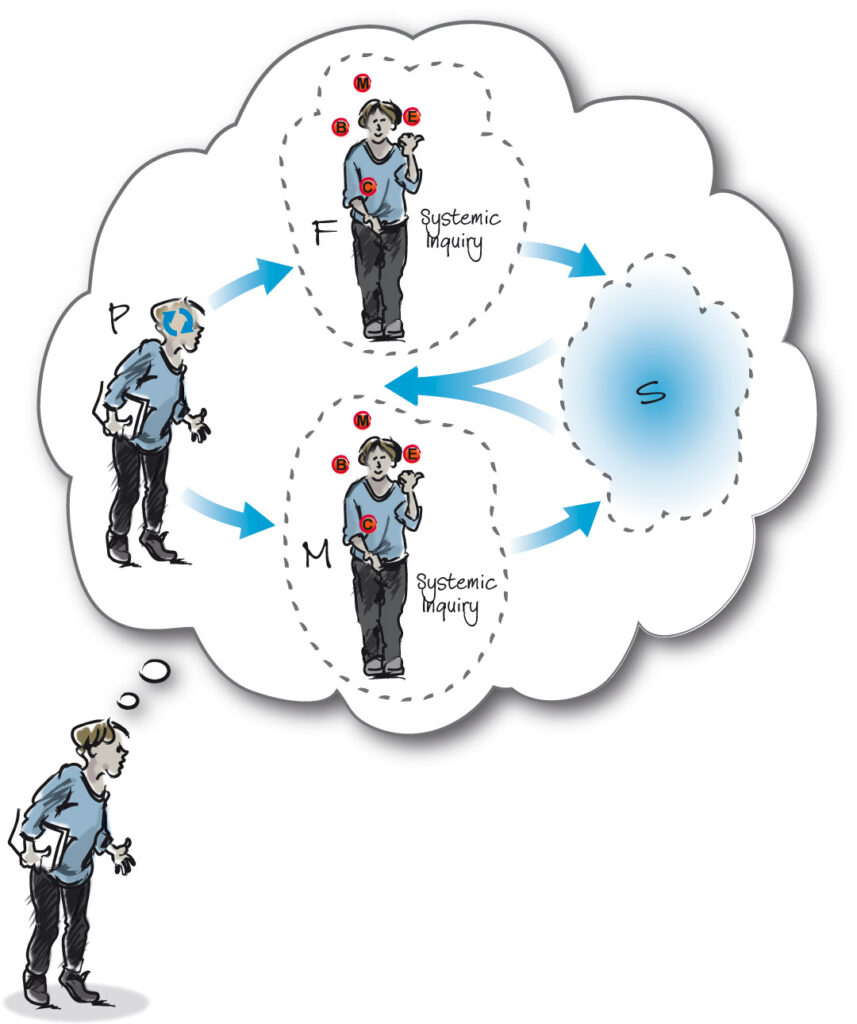TB872: Adding the juggler isophor to the PFMS heuristic
Note: this is a post reflecting on one of the modules of my MSc in Systems Thinking in Practice. You can see all of the related posts in this category.

This course is accretive in that it builds up student knowledge and understanding, particularly through the use of concepts as they relate to diagrams. In an early post for this module, I introduced the PFMS heuristic. This post adds into the mix the isophor of the juggler.
Placing myself in the position of the practitioner in the above image, I can see how the juggler isophor fits into the PFMS setting: I am not merely an observer but an active participant. I bring with me a history of systems thinking in practice (STiP) as well as the experiences of juggling various aspects of my personal, professional, and academic life.
In this example wehre the practice situation S is my own practice of STiP, I’m engaging with a nested set of frameworks (F) and methods (M). This nested nature reflects the complexity of systems thinking, where ideas are interconnected and inform one another. The first layer of the framework is the domain of Systems itself, as interpreted through the various lineages and the readings incorporated in the course material. This forms a theoretical backdrop against which my inquiry is conducted.
The second layer comprises systemic inquiry, where the juggler isophor serves both as a framework and a method. This duality recognizes the isophor as a conceptual tool informed by second-order systems praxis theory and metaphor theory. These theories are not just academic constructs but are actively developed and applied by practitioners in order to make sense of and navigate our practice.
As we juggle, we’re not manipulating physical objects but relational dynamics over time. This includes me as a practitioner (P), as well as the frameworks (F), methods (M), and situation (S) over time. The performance of juggling in this context is not just about maintaining balance and motion but also about understanding, analysing, intervening, modelling, changing, and interpreting the situation at hand. It’s about how these elements are perceived and assessed by myself as a reflective and reflexive practitioner— somebody who is not just thinking but also evaluating the effectiveness and impact of actions within the practice.
The juggler isophor reminds us that systems thinking is a dynamic and ongoing practice, where the practitioner is continuously engaged with the elements of PFMS; we adapt, learn, and evolve in response to the situation of concern. In doing so we’re trying to achieve an ‘ideal type’, as mentioned towards the end of a recent post. To reiterate: “an ideal type is not a Platonic form, but rather something which is more akin to the Pragmatic idea that something is ‘good in the way of belief’. That is to say that it’s an approach to situations which lead to good outcomes, rather than being a template for all outcomes.”
